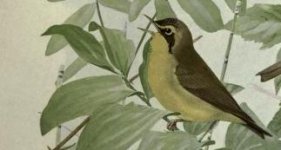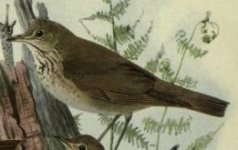-
Welcome to BirdForum, the internet's largest birding community with thousands of members from all over the world. The forums are dedicated to wild birds, birding, binoculars and equipment and all that goes with it.
Please register for an account to take part in the discussions in the forum, post your pictures in the gallery and more.
You are using an out of date browser. It may not display this or other websites correctly.
You should upgrade or use an alternative browser.
You should upgrade or use an alternative browser.
From my Manhattan Window (5 Viewers)
- Thread starter Pinewood
- Start date
More options
Who Replied?Pinewood
New York correspondent

Hello all,
The species keep on coming. Dr. Robert de Candido calls this peak season, to be matched by late August through September.
I have seen a yellow rumped warbler, a common yellowthroat [aka Maryland yellow], magnolia warbler, a chestnut sided warbler, and a scarlet tanager.
There is more to come.
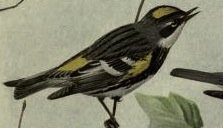

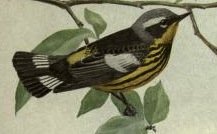
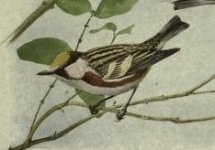
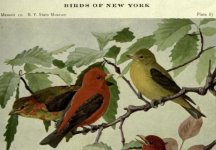
All images by Louis Agassiz Fuertes.
Stay safe,
Arthur
The species keep on coming. Dr. Robert de Candido calls this peak season, to be matched by late August through September.
I have seen a yellow rumped warbler, a common yellowthroat [aka Maryland yellow], magnolia warbler, a chestnut sided warbler, and a scarlet tanager.
There is more to come.





All images by Louis Agassiz Fuertes.
Stay safe,
Arthur
Pinewood
New York correspondent

Hello,
A little bit of catch up and sighting in the last few days. I was delighted to see a male rose breasted grosbeak. For some reason, I referred to it in my confusion, as a gross breasted rose beak, an interesting imaginary bird. Early last week, I saw a Blackburnian warbler, a Nashville warbler, a Canada warbler, a veery, and a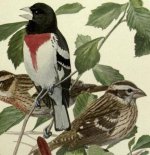

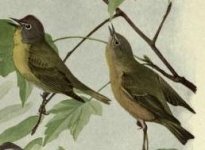
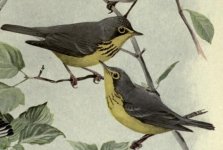
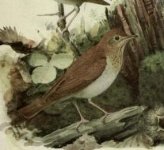
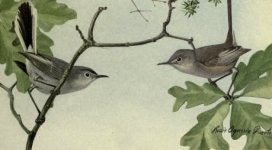 possible blue gray gnatcatcher.
possible blue gray gnatcatcher.
Stay safe,
Arthur
One recent day, I recorded 22 species.
A little bit of catch up and sighting in the last few days. I was delighted to see a male rose breasted grosbeak. For some reason, I referred to it in my confusion, as a gross breasted rose beak, an interesting imaginary bird. Early last week, I saw a Blackburnian warbler, a Nashville warbler, a Canada warbler, a veery, and a





 possible blue gray gnatcatcher.
possible blue gray gnatcatcher.Stay safe,
Arthur
One recent day, I recorded 22 species.
Pinewood
New York correspondent

Hello,
Let me catch up with my sightings: yellow warbler, Wilson's warbler, blackpoll warbler, Blackburnian warbler, and black throated blue warblers.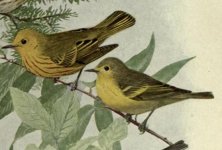
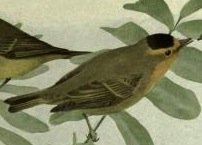
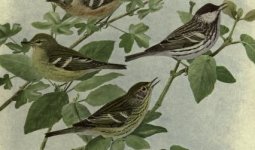


Last week, I spotted an active Baltimore Oriole nest, which I was happy to share with others. The nest is penile, or hanging. Here is a a video of Baltimore orioles at their nest.
More to come.
Stay safe,
Arthur
Let me catch up with my sightings: yellow warbler, Wilson's warbler, blackpoll warbler, Blackburnian warbler, and black throated blue warblers.





Last week, I spotted an active Baltimore Oriole nest, which I was happy to share with others. The nest is penile, or hanging. Here is a a video of Baltimore orioles at their nest.
More to come.
Stay safe,
Arthur
Pinewood
New York correspondent

Hello,
The warbler season is `over. The bay breasted, a warbling vireo, which is nesting near the Baltimore Oriole's nest, and Tennessee warblers were the last I saw. However, there are other birds turning up. There were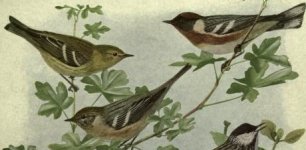
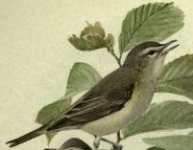
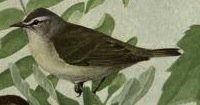

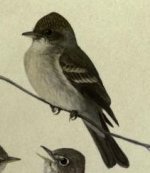
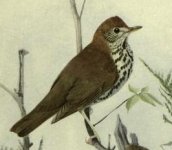 a least flycatcher, a wood thrush, and a gray cheeked thrush.
a least flycatcher, a wood thrush, and a gray cheeked thrush.
Stay safe,
Arthur
The warbler season is `over. The bay breasted, a warbling vireo, which is nesting near the Baltimore Oriole's nest, and Tennessee warblers were the last I saw. However, there are other birds turning up. There were





 a least flycatcher, a wood thrush, and a gray cheeked thrush.
a least flycatcher, a wood thrush, and a gray cheeked thrush.Stay safe,
Arthur
Attachments
Pinewood
New York correspondent

Hello,
Central Park is in the doldrums for seasonal changes. Flycatchers have turned up: least flycatcher, great crested flycatcher and Eastern kingbirds. The latter make an annual appearance neat the Delacorte Theatre, testing high above the shore. Additionally, I caught sight of a green heron on Turtle Pond, last week. Before the Lake was drained to remove wetlands, more than ten year, ago, green herons would nest on the Northern Lobe of the Lake, AKA Bank Rock Pool. After that the herons abandoned their usual nesting site. Apparently, the went to the northern end of the Park, where I rarely go.
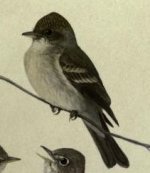
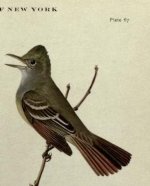

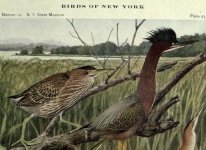
The Eastern is one bird which I eagerly anticipate. With luck, the nest will be visible and I can see them feeding the chicks and then the fledging.
This is also the season when I see turtles digging nests.
Stay safe,
Arthur
Central Park is in the doldrums for seasonal changes. Flycatchers have turned up: least flycatcher, great crested flycatcher and Eastern kingbirds. The latter make an annual appearance neat the Delacorte Theatre, testing high above the shore. Additionally, I caught sight of a green heron on Turtle Pond, last week. Before the Lake was drained to remove wetlands, more than ten year, ago, green herons would nest on the Northern Lobe of the Lake, AKA Bank Rock Pool. After that the herons abandoned their usual nesting site. Apparently, the went to the northern end of the Park, where I rarely go.




The Eastern is one bird which I eagerly anticipate. With luck, the nest will be visible and I can see them feeding the chicks and then the fledging.
This is also the season when I see turtles digging nests.
Stay safe,
Arthur
Paultricounty
Well-known member

Arthur is there a reason you don’t go to the northern part of the park?Hello,
Central Park is in the doldrums for seasonal changes. Flycatchers have turned up: least flycatcher, great crested flycatcher and Eastern kingbirds. The latter make an annual appearance neat the Delacorte Theatre, testing high above the shore. Additionally, I caught sight of a green heron on Turtle Pond, last week. Before the Lake was drained to remove wetlands, more than ten year, ago, green herons would nest on the Northern Lobe of the Lake, AKA Bank Rock Pool. After that the herons abandoned their usual nesting site. Apparently, the went to the northern end of the Park, where I rarely go.
View attachment 1513804View attachment 1513805View attachment 1513806
View attachment 1513807
The Eastern is one bird which I eagerly anticipate. With luck, the nest will be visible and I can see them feeding the chicks and then the fledging.
This is also the season when I see turtles digging nests.
Stay safe,
Arthur
Pinewood
New York correspondent

Hell Paul,Arthur is there a reason you don’t go to the northern part of the park?
My daily goal is five miles, 8kms, of walking. Starting from home, and adding an evening walk, I need only go as far as the south end of the Great Lawn, although I sometimes get as far north as the south end of the Reservoir. For me, bird watching is an incentive to walk, not an end in itself.
Stay safe,
Arthur
Pinewood
New York correspondent

Hello all,
Stragglers turned up recently: northern shovellers and even a white throat sparrow on the fifth,, inst. On the same day I saw a purple finch. This species has been mostly supplanted by the alien house finch, so seeing one is not very common. During the days of Canadian smoke, I avoided outdoor activity. Otherwise, if I do not see new species, I do get a kick from seeing both Baltimore orioles and wood thrushes, feeding chicks at their nests.
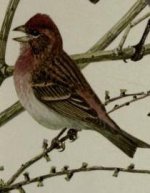
In my post #1006, there is a link to a video showing Baltimore Orioles at a nest.
Stay safe,
Arthur
Stragglers turned up recently: northern shovellers and even a white throat sparrow on the fifth,, inst. On the same day I saw a purple finch. This species has been mostly supplanted by the alien house finch, so seeing one is not very common. During the days of Canadian smoke, I avoided outdoor activity. Otherwise, if I do not see new species, I do get a kick from seeing both Baltimore orioles and wood thrushes, feeding chicks at their nests.

In my post #1006, there is a link to a video showing Baltimore Orioles at a nest.
Stay safe,
Arthur
Pinewood
New York correspondent

Hello,
Last week I was very busy, keeping me away from long walks in Central Park. I missed seeing the fledgling Baltimore orioles. Unfortunately, the Eastern Kingbirds were chased by nesting grackles from their usual nesting tree. However, I did get to see a wood thrush chick emerge from the nest.
I have been seeing black crowned night herons on almost every outing and today a great blue heron was on the Northern Lobe of the Lake.
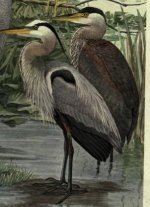
Stay safe,
Arthur
Last week I was very busy, keeping me away from long walks in Central Park. I missed seeing the fledgling Baltimore orioles. Unfortunately, the Eastern Kingbirds were chased by nesting grackles from their usual nesting tree. However, I did get to see a wood thrush chick emerge from the nest.
I have been seeing black crowned night herons on almost every outing and today a great blue heron was on the Northern Lobe of the Lake.

Stay safe,
Arthur
Pinewood
New York correspondent

Hello,
I have been see quite a few juvenile American robins in the Park. There was even an American robin nest in a ventilator of my block of flats. I have seen an immature wood thrush not far from its original nest. Today, I saw a great crested flycatcher chick at its nest, a tree hole.
Stay safe,
Arthur
I have been see quite a few juvenile American robins in the Park. There was even an American robin nest in a ventilator of my block of flats. I have seen an immature wood thrush not far from its original nest. Today, I saw a great crested flycatcher chick at its nest, a tree hole.
Stay safe,
Arthur
Pinewood
New York correspondent

Hello,
Every May and even in June, I see turtles laying eggs in the Park. They always lay the eggs away from the water, so that the hatchlings have to get to the water to survive. I even saw one tourist picking up a turtle, returning it to the water thinking it was lost. I attach a photo of one female amphibian digging a nest.
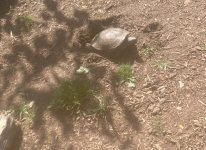
Stay safe,
Arthur
Every May and even in June, I see turtles laying eggs in the Park. They always lay the eggs away from the water, so that the hatchlings have to get to the water to survive. I even saw one tourist picking up a turtle, returning it to the water thinking it was lost. I attach a photo of one female amphibian digging a nest.

Stay safe,
Arthur
Last edited:
Users who are viewing this thread
Total: 6 (members: 0, guests: 6)




